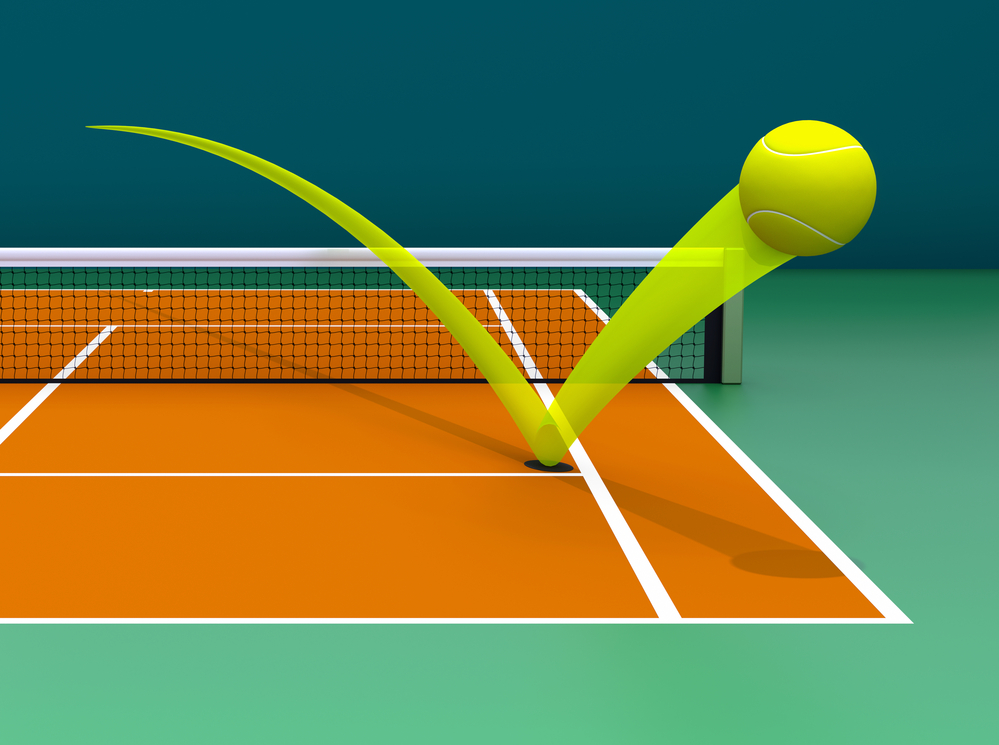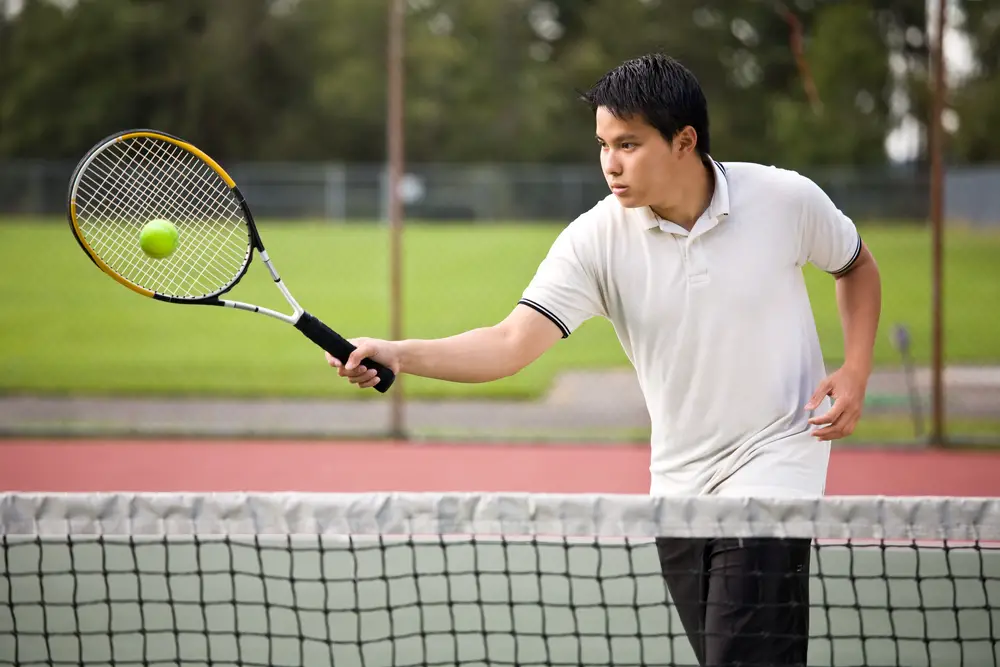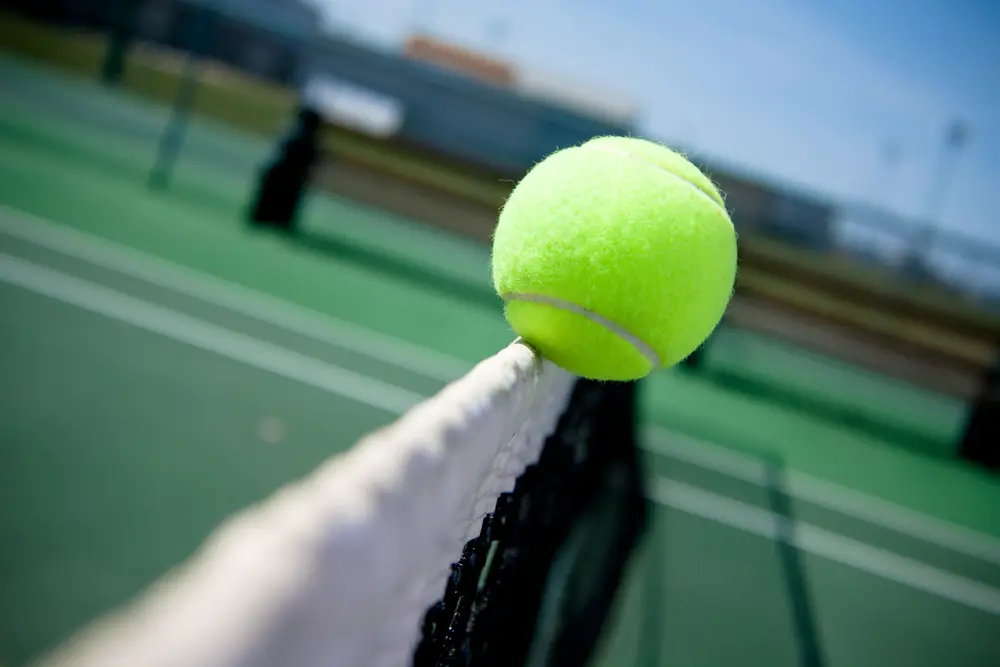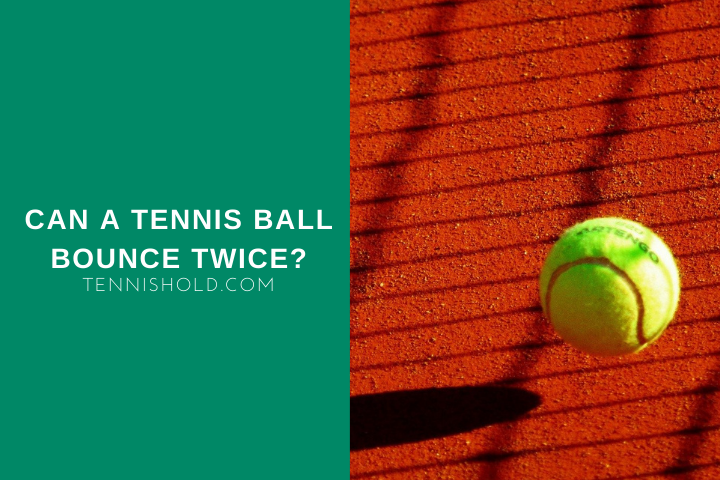In Badminton, a point ends when the shuttlecock touches the ground. In squash, it is when the ball bounces a second time.
But how many times can the ball bounce in tennis?
The ball is only allowed to bounce once in tennis. If it bounces a second time, the point ends. The only exception is in wheelchair tennis. In wheelchair tennis, the point ends when the ball bounces a third time.
Almost all racket sports have the two-bounce rule. Badminton is the only major exception, for obvious reasons.
In this article I will be discussing:
- The number of times the ball can bounce in tennis
- Whether you are allowed to hit the ball before it bounces
- What happens if the ball bounces back over the net
Later on, I will be sharing some examples of the ball bouncing back over the net in a professional match.
Read on!
How Many Times Can The Ball Bounce In Tennis?

Unless you are playing wheelchair tennis, the answer is always once. There is no exception to this.
In wheelchair tennis, the ball is allowed to bounce twice. The second bounce in wheelchair tennis can be either in or outside the boundaries of the court.
You can have one extra bounce in wheelchair tennis for one simple reason. No matter how fit you are, it will take longer to get to the ball in a wheelchair than running.
The rallies would be very short if only one bounce was allowed.
But why only one bounce in the standard version of tennis? There are two main reasons.
The first is intensity. The ball slows down once it hits the ground. If it hits the ground a second time, it will slow down even more.
A 120 mph serve will reduce to as little as 55 mph by the time it reaches the opponent’s racket.
The second reason is logistics. At the professional level, they already have to stand very far behind the baseline to take the ball.
This is even more true on clay. Many stadiums would probably have to be extended in length to accommodate for the extra bounce.
Have a look at this highlights video from the 2020 French Open final. See how far back Nadal and Djokovic are standing, especially when returning serve.
Imagine how much further it would be if they were allowed a second bounce.
By allowing a second bounce the dynamics of the game would change dramatically.
Can You Hit The Ball Before It Bounces?

Yes, you can hit the ball before it bounces, but there is one exception. The serve.
A shot you hit before the ball bounces is called a volley.
You are not allowed to volley the serve. If you volley the serve, the point is immediately lost. However, after the service, you can volley as much as you like without restrictions.
There is one primary reason as to why you are not allowed to volley the serve.
As the returner, I could stand very close to the net and attempt to block the serve. However, this would immediately give me many different angles to hit. It would thus be hard for the server to get into the rally.
Of course, you could argue at the same time that it is challenging to volley a serve coming in at over 100 mph. But, whichever way you look at it, it will change the game’s dynamics hugely if it were allowed.
There is also a safety element. For example, the fastest serve ever recorded was over 155 mph. I would hate to think of what would happen if a serve at that speed hit someone in the face, or worse, the eyes.
Tennis, on the whole, is a safe sport, but the odds are that it would change pretty soon if it was allowed to volley the serve.
I don’t think we would ever see the sort of cricket-style incidents in which some die from strikes to the head.
I wouldn’t rule out reading stories in the newspapers of players going blind from trying to volley serves.
When you see players injure themselves on TV today it is mostly due to falls and slips.
What If A Tennis Ball Bounces Back Over The Net?

This is an excellent topic of discussion. If you have ever played tennis during a storm with heavy wind, you will undoubtedly have wondered about this.
If I hit the ball onto your side of the court and wind or spin brings it back over so that the second bounce is on my side, I win the point.
You may, at this point, think it is unfair. There is, however, one thing you can do.
The rule is that you are not allowed to reach over the net unless you are following through from a shot. In other words, as long as you make contact with the ball on your side of the net, you can follow through on to the other side.
The exception to the rule mentioned above is if the ball bounces back over the net. In this instance, you would be allowed to reach over the net to contact the ball before the 2nd bounce.
If when reaching over the net to hit the ball, the racket, or any part of your body touches the net, you will still lose the point. There are no exceptions to this rule, even if the ball bounces back over the net.
The 2021 ITF rules of tennis state the following:
A good return basically means that the ball is in the court, and the point hasn’t ended.
Rule 24 describes all the incidents in which a point is lost in tennis. You can interpret this as meaning as long as you haven’t lost the point earlier in the rally, then the rule is valid.
If you want to see some occasions when this has happened on the pro tour, I recommend you watch this.
Final Words
Only a few times in my life have I pulled off a shot that bounces back over the net.
The most memorable occasion was playing on a court right by the coast in Essex, England. It was an incredibly windy day in the fall.
I just hit a standard drop shot, and the wind was so extreme it pulled the ball back over the net.
Have you ever won a point this way? But, on the other hand, perhaps you were on the losing end?

